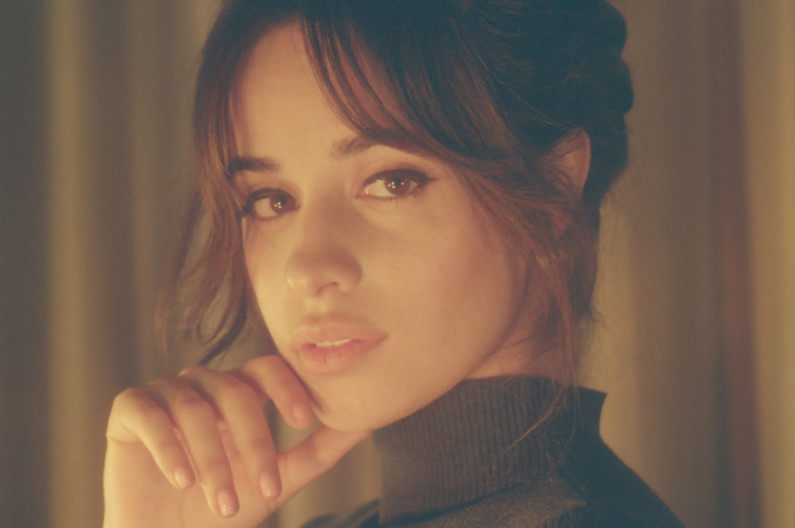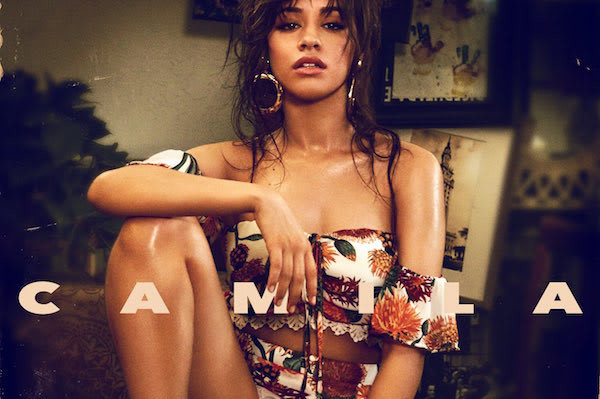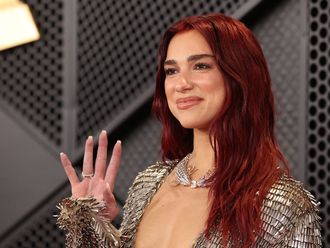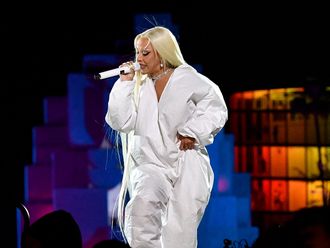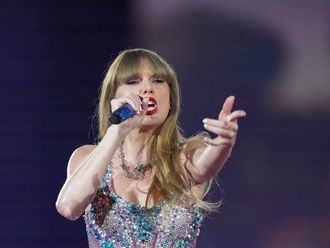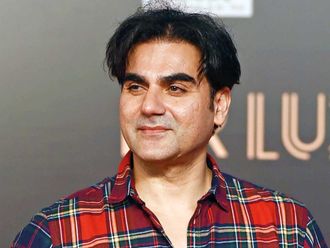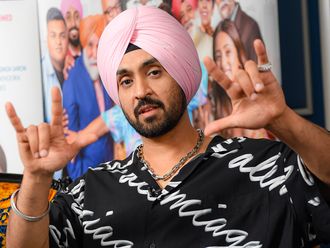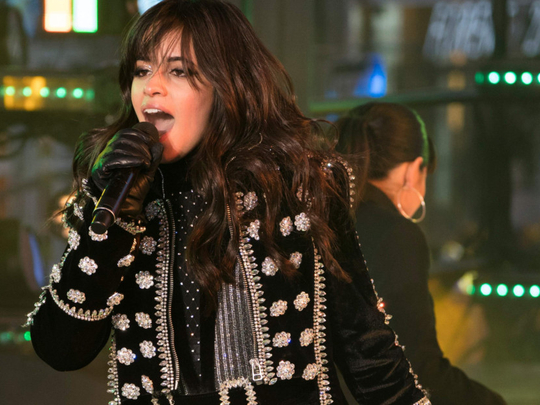
Camila Cabello has only been in love once. But when it comes to crushes, she’s a connoisseur.
The pop singer and songwriter, formerly of the girl group Fifth Harmony, has filled pages of notes on her iPhone with ruminations on the sugar rush of embryonic infatuation and its aftermath — words of hunger and grit that her fans turn into Instagram captions and scream back at her in concert. A pair of suggestive duets in the past two years, I Know What You Did Last Summer with Shawn Mendes and Bad Things with Machine Gun Kelly, have been streamed more than 520 million times, according to Nielsen Music. Along with her breakout solo smash from last summer, Havana, which has led Billboard’s pop radio chart longer than any other song by a solo female artist in the past five years, they’ve helped turn her into an avatar for young girls on the cusp of steeper emotional terrain.
On a December afternoon in a leafy neighbourhood here, Cabello, 20, revisited ground zero of her romantic vicissitudes. Ten years ago, in the butterfly garden at Pinecrest Elementary School, a young Romeo set a date with her among the Panama roses and gave her her first kiss, unlocking the source code for a bottomless trove of love songs.
“It was this boy that I was obsessed with my whole time in elementary school,” she recalled, standing in the garden. “He kissed me on the cheek and I ran away — I still do that when someone wants to kiss me.”
Although not yet of legal drinking age, Cabello has come a long way from the schoolyard. At 15, she was beamed into the homes of millions of Americans as a contestant on the US version of the reality-singing competition “The X Factor.” The show placed her in a five-woman vocal group modelled on One Direction that the viewers at home named Fifth Harmony. Two albums — on Simon Cowell’s Syco label in partnership with Epic Records — and six tours followed in a span of five years, during which time Cabello was, if not officially the group’s lead, a consensus favourite, with the biggest voice and those disarming eyes.
And then it all went to pieces. As manufactured pop groups tend to do. Only in this case, the split seemed sudden and surprisingly vicious: One day, Fifth Harmony was performing at the final stop of the Jingle Ball tour, smiling and hair-flipping. The next, contentious and contradictory statements were released, and Cabello found herself on the lonely end of a sharp divide.
That was just over a year ago. In the interim, Cabello has struck out on her own, putting her hands on the controls of her professional life for the first time.
Her new album, Camila, will test her prospects as a solo proposition. The biggest stars to break away from groups — Michael Jackson, Justin Timberlake, Beyonce — did so from stronger footing, in eras when the music industry was thriving. Today, Cabello is just one in a cacophony of voices aiming to break through in a harsh, post-streaming environment.
“It’s not easy for anybody, regardless of your starting point,” said Tom Poleman, chief programming officer for the radio conglomerate iHeartMedia, which recently booked Cabello solo for its Jingle Ball. “The field is so competitive that you really need the planets to align.”
At times, sole proprietorship has been overwhelming, with people constantly asking Cabello for her creative input or asking what happened with Fifth Harmony — a subject she does her best to avoid. “I think there’s a healthy amount of space you need to give certain things,” she said.
So for 11 days in late December, in the cocoon of her hometown, she took a break. She settled into old rhythms at her family home and came to Pinecrest to pick up her younger sister, Sofia, only after wresting herself from a savoured Sex and the City binge. (“In my heart I’m a Carrie, but sadly I think I act like a Charlotte,” she said.)
On a tour of its green, al fresco campus, wearing True Religion overalls with one suspender undone and black high-top Chuck Taylors, she looked at ease and made everyone around her feel the same. An old teacher asked whether she would be going on tour soon, and she said she was in no rush. “For now,” she said, “I just want to be a kid.”
Cabello comes from a line of strivers. She was born in Havana to a Cuban mother and Mexican father and moved back and forth between Cojimar and Mexico City until age 6. One day, her mother, Sinuhe, told her she was going to Disney World, and the two spent the next month together riding by bus to an immigration centre at the Mexican border with the United States. Sinuhe had been an architect in Cuba, but in Miami, where she and her daughter moved in with a close family friend, she found work in the shoe department at a Marshalls.
Cabello’s father, Alejandro, emigrated later and earned money washing cars at the mall. Eventually the couple saved enough to start their own construction company. “My parents’ story helps me to know what’s important in life,” Cabello said. “A lot of times you can be here and be on Twitter and you think that the world is the internet. But I know what it’s like in the places my family has come from and the struggles people go through.”
It caught Sinuhe and Alejandro by surprise when, for her 15th birthday in 2012, Cabello asked them to drive her to audition for the second season of The X Factor.
“She was so shy, so shy,” said Sinuhe, who now travels with her daughter on the road, describing how her oldest child would regularly burst into tears at family parties with large crowds and loud music. “We didn’t even think music was a possibility for her,” Sinuhe said.
In Fifth Harmony — with Ally Brooke, Dinah Jane, Lauren Jauregui and Normani Kordei — Cabello was living a dream. The group performed at the White House (twice) and released addictive hits like Worth It and Work From Home that alone racked up more than 1 billion streams, according to Nielsen Music, and earned them legions of fiercely loyal fans.
But dreams can change. In a statement released at midnight on December 18, 2016, the four other members of the group suggested that Cabello had turned her back on them, communicating her intentions to leave “through her representatives.” Cabello, in a subsequent statement of her own, said that she had long been open about her desire to explore a solo career and was blindsided by what amounted to a public excommunication.
Over a feast of Cuban food at one of her family’s favourite restaurants in Miami, and in a subsequent interview in New York a week later, she agreed to speak at length about how things fell apart.
She said that her collaboration in late 2015 with Mendes — the first time a Fifth Harmony member released music under her own name — had created tension; that she had asked to help write lyrics for Fifth Harmony songs and was rebuffed; that she initially wanted to stay in the group while working on a solo album but the other members shut her out instead.
“I was just curious and I wanted to learn, and I saw all these people around me making music, writing songs and being so free,” she said. “I just wanted to do that, and it did not work.”
Cabello said that after the awkwardness of her collaboration with Mendes, things further soured when she began attending writing sessions with producers including Diplo, Cashmere Cat and Benny Blanco. Eventually, she said, she was given an ultimatum.
“It became clear that it was not possible to do solo stuff and be in the group at the same time,” she said. So she made her choice, basing it on what she said was her conviction that “if anyone wants to explore their individuality, it’s not right for people to tell you no.”
Since the break-up, Cabello has tried to move on from hard feelings, throwing herself into Camila. (She changed its name from The Hurting, the Healing, the Loving partly to wash her hands of drama.)
But it hasn’t always been easy. In August last year, the remaining members took a less-than-subtle jab at their former groupmate with a stunt that opened a high-profile performance at the MTV Video Music Awards. As the camera zoomed in on a dark, elevated platform showing five women in silhouette, one was dramatically yanked off the stage as if hit by a truck.
Cabello’s eyes welled up as she recalled watching it live. She had been at home with her mother. “It definitely hurt my feelings,” she said. “I wasn’t expecting it, I wasn’t prepared for it — especially because at that point I’d moved on from it. I was just like, ‘What? Why?’”
She gathered herself. “I have to make space for the good stuff to happen in my life,” she said. “I don’t like holding onto the past, especially when it’s stuff that, in my opinion, is just petty.”
Like the pop astronauts who went solo before her, Cabello is now both a known quantity and a blank slate, caught between an outsize past and an uncertain future. Her first single as a solo artist was an early artefact of this wobbly developmental period.
Crying in the Club — an arch, dance hall-flecked power ballad released last spring — was produced by Blanco from an original demo written and recorded by Sia. The track underperformed commercially and was left off the final track list of Camila.
“The reality of that song is it doesn’t feel or sound like Camila,” said Roger Gold, Cabello’s manager and a former lawyer for Fifth Harmony. Gold said it took time for Cabello, free of the army of handlers and tacticians who maintained creative control of the girl group, to feel comfortable asserting herself in front of more seasoned collaborators. “The most important learning in this whole thing was that we were most successful when Camila trusted in her own instincts,” he said.
A breakthrough came while she was working with producer Frank Dukes, born Adam Feeney, who has made his name as a prolific but low-key co-conspirator of self-styled stars like Drake and Lorde. Many potential collaborators had come to the studio armed with sleek, brassy Top 40 munitions in the style of Fifth Harmony hits. But Feeney’s approach was more nonchalant.
Over sushi during an early session with Cabello last winter, he played her a deceptively simple instrumental with a prominent salsa piano riff. It reminded the singer of her birthplace, and she wrote the chorus for what became on the spot.
“There’s not another artist in the world who could have done that song — she just owns it,” Feeney said.
Many of the songs on Camila, which Feeney executive produced and includes writing by Cabello on every track, are infused with tonal or lyrical references to her Latin heritage. Cabello said she took inspiration from the Latin music that soundtracked her childhood, as well as more contemporary reggaeton revisionists like Calle 13 and J Balvin. Then she blended those sounds with the auteur pop of artists like her friends Taylor Swift and Ed Sheeran, hoping to unearth her own original recipe.
“I feel like the best way to come up with something new and different is just to be the you-est you possible,” Cabello said. “If you pull from all the different little parts of yourself, nobody can replicate that.”
Poleman, of iHeartMedia, said it is Cabello’s sensibilities as a songwriter that will define her career. With Havana and Bad Things, he said, “she has quickly established herself as one of the most important young artists in pop music.
“It always comes down to whether or not you have a song that resonates,” he added. “I know she spends a lot of time thinking about that.”
In an under-lit, overpriced restaurant in midtown Manhattan after her break in Miami had ended, Cabello, who has lately imagined herself as a vegan, ate a kale salad while bopping along to Michael Jackson’s “The Way You Make Me Feel.” The song had been a highlight from a recent Christmas Eve karaoke night with her family (she was the only one who knew its final Give it to me pre-chorus).
In 48 hours, she would perform before Mariah Carey at Dick Clark’s New Year’s Rockin’ Eve With Ryan Seacrest in a bejewelled, ankle-length coat and metallic jumpsuit that made her look like a glamorous conquistador. Then she had a tour to design, and music video concepts to finalise and a social media campaign to figure out.
She started to explain why things were trickier now, how she no longer had anyone to pick up the slack.
“Even when there’s a day off, there’s never really a day off, because there’s so many decisions to be made and you’re always rushing to make stuff,” she said, as Jackson ad-libbed in the background. The music kept making her lose her train of thought. Finally, after a few vain attempts to catch it, she gave in and stopped explaining herself and sang along.
___
Don’t miss it
Camila Cabello’s debut album Camila is out now.



